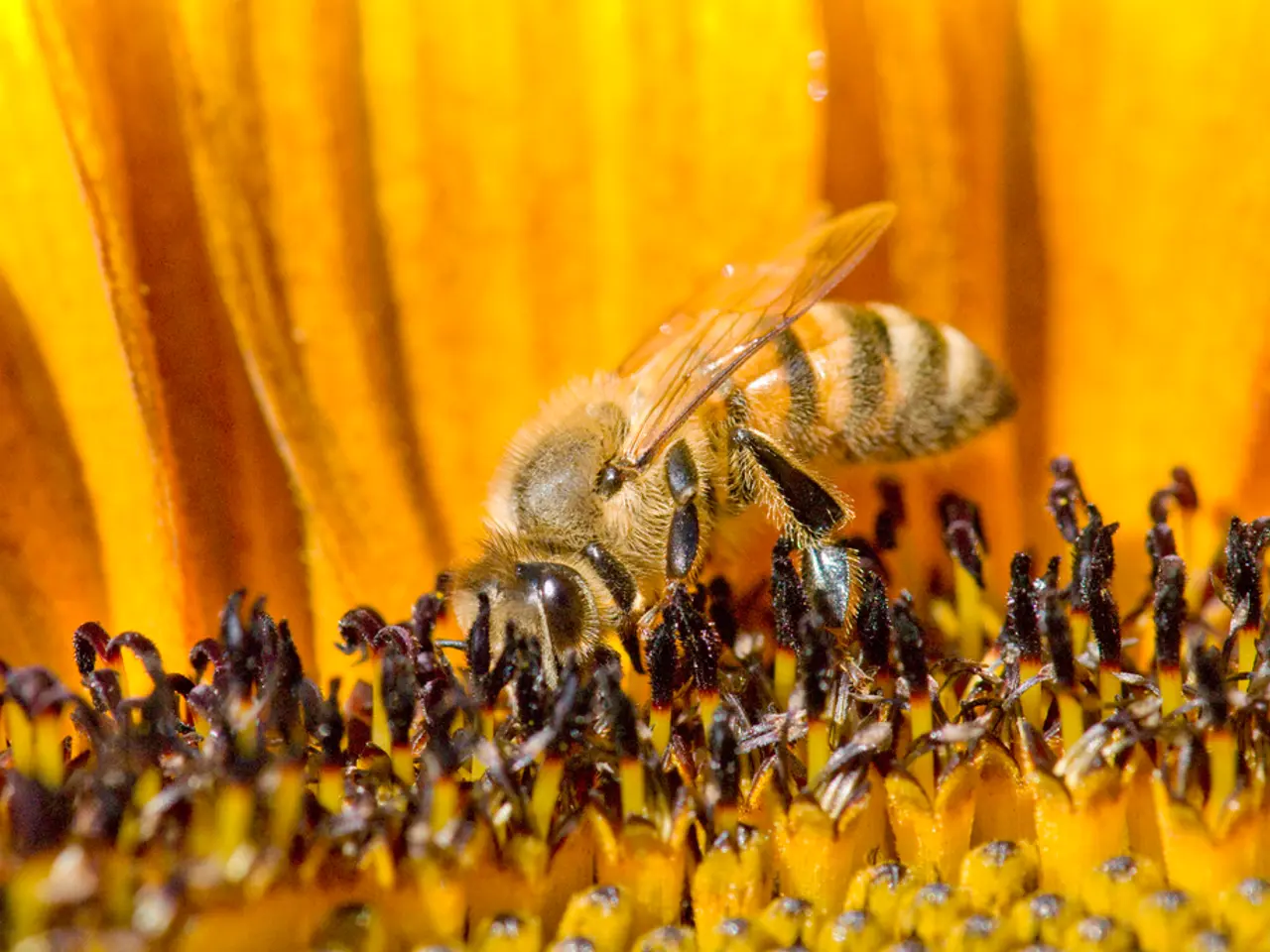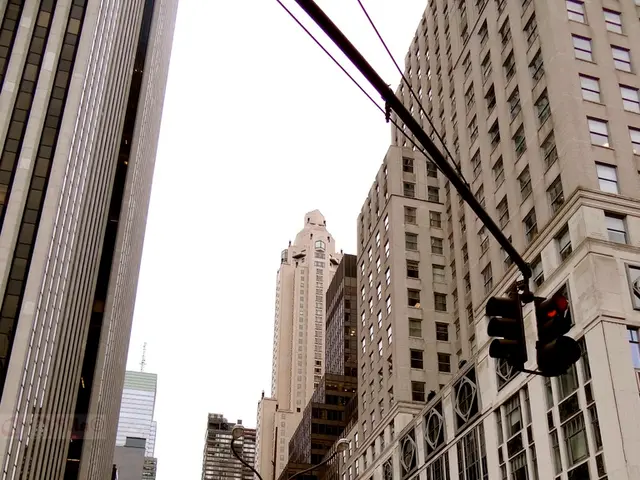Optical illusions perplex both honeybees and humans in similar ways, research suggests
In a groundbreaking study led by Scarlett Howard, PhD candidate, and Adrian Dyer, Associate Professor, at RMIT University, it has been discovered that honeybees, like humans, experience visual illusions. This shared perceptual quirk offers significant insights into brain evolution and visual processing.
The researchers favour convergent evolution as the more plausible explanation, suggesting that perceiving context-dependent size illusions isn't a quirk but an adaptive advantage. This finding suggests that despite their tiny and structurally very different brains, honeybees and humans may share fundamental and ancient principles in how visual information is processed.
The key to understanding this shared ability lies in the concept of convergent evolution, where distinct species develop comparable solutions to common perceptual challenges. Honeybees have evolved visual systems that, while anatomically different from humans, can interpret complex visual stimuli like illusions similarly.
Understanding how honeybees perceive visual illusions can shed light on the minimal neural requirements for such complex perceptual phenomena. It implies that core elements of figure-ground segregation, pattern recognition, and contextual interpretation of visual input may arise from basic neural circuits rather than from large, highly specialized brains.
Research in vision science, including studies on other animals and mice, indicates that early visual processing prioritises global topological features rather than detailed local features. Honeybees’ perception of illusions might reflect this "global-first" strategy, suggesting that early stages of visual cognition rely on abstract properties of stimuli—a mechanism possibly conserved through evolution.
These findings can influence computational models in artificial neural networks by encouraging focus on how small neural architectures can achieve sophisticated perception. Understanding bee vision helps design efficient, minimalistic systems that replicate complex visual tasks, advancing both neuroscience and machine vision.
In the study, honeybees were trained in two different scenarios: free-flying and constrained viewing. Bees in the free-flying condition perceived the size illusion, while bees in the constrained viewing condition did not. This emphasises the importance of considering viewing context when working on vision in any animal.
This discovery potentially resolves years of conflicting research across species by suggesting that viewing conditions, not fundamental differences in neural processing, might explain the differences in how animals perceive illusions. The research reminds us that perception isn't an objective window onto reality but an active construction process shaped by evolutionary pressures and environmental contexts.
The Ebbinghaus Illusion and Delboeuf Illusion are examples of geometric illusions that humans experience. However, these illusions aren't limited to humans; they are also experienced by various animal species, including bottlenose dolphins, bower birds, domestic chicks, and redtail splitfins.
Flowers may have evolved patterns that trigger size illusions in bee vision, potentially exploiting this perceptual quirk for increased pollination success. This study highlights the practical applications of understanding how different species perceive visual illusions across multiple fields, including Artificial Intelligence, Psychology and Neuroscience, Education, and Conservation.
In summary, bees perceiving illusions like humans supports the idea that visual cognition depends on fundamental, conserved neural processes, rather than specific brain sizes or structures. This advances our comprehension of how brains have evolved to process visual information efficiently and informs both biology and technology.
- The shared visual illusion experiences by honeybees and humans indicate potential insights into brain evolution and visual processing, even in different species.
- The finding of honeybees perceiving visual illusions highlights the principle of convergent evolution, where distinct species develop similar solutions to common perceptual challenges.
- Understanding the neural requirements for honeybees to perceive visual illusions suggests that core elements of perception may arise from basic neural circuits, not large, highly specialized brains.
- Research in vision science indicates that early visual processing prioritizes global topological features, a strategy possibly reflected in honeybees' perception of visual illusions.
- These findings can influence computational models in artificial neural networks, encouraging focus on small neural architectures achieving sophisticated perception.
- The study's findings can help design efficient, minimalistic systems that replicate complex visual tasks, advancing both neuroscience and machine vision.7.Considering viewing context is crucial when working on vision in any animal, as demonstrated by the disparity in honeybee perception between free-flying and constrained viewing conditions.
- The discovery that various animals experience the same visual illusions as humans challenges the idea that perception is an objective window onto reality, emphasizing its active construction process shaped by evolutionary pressures and environmental contexts.
- The study's implications extend beyond biology, affecting multiple fields, including Artificial Intelligence, Psychology and Neuroscience, Education, and Conservation, by highlighting practical applications of understanding how different species perceive visual illusions.




